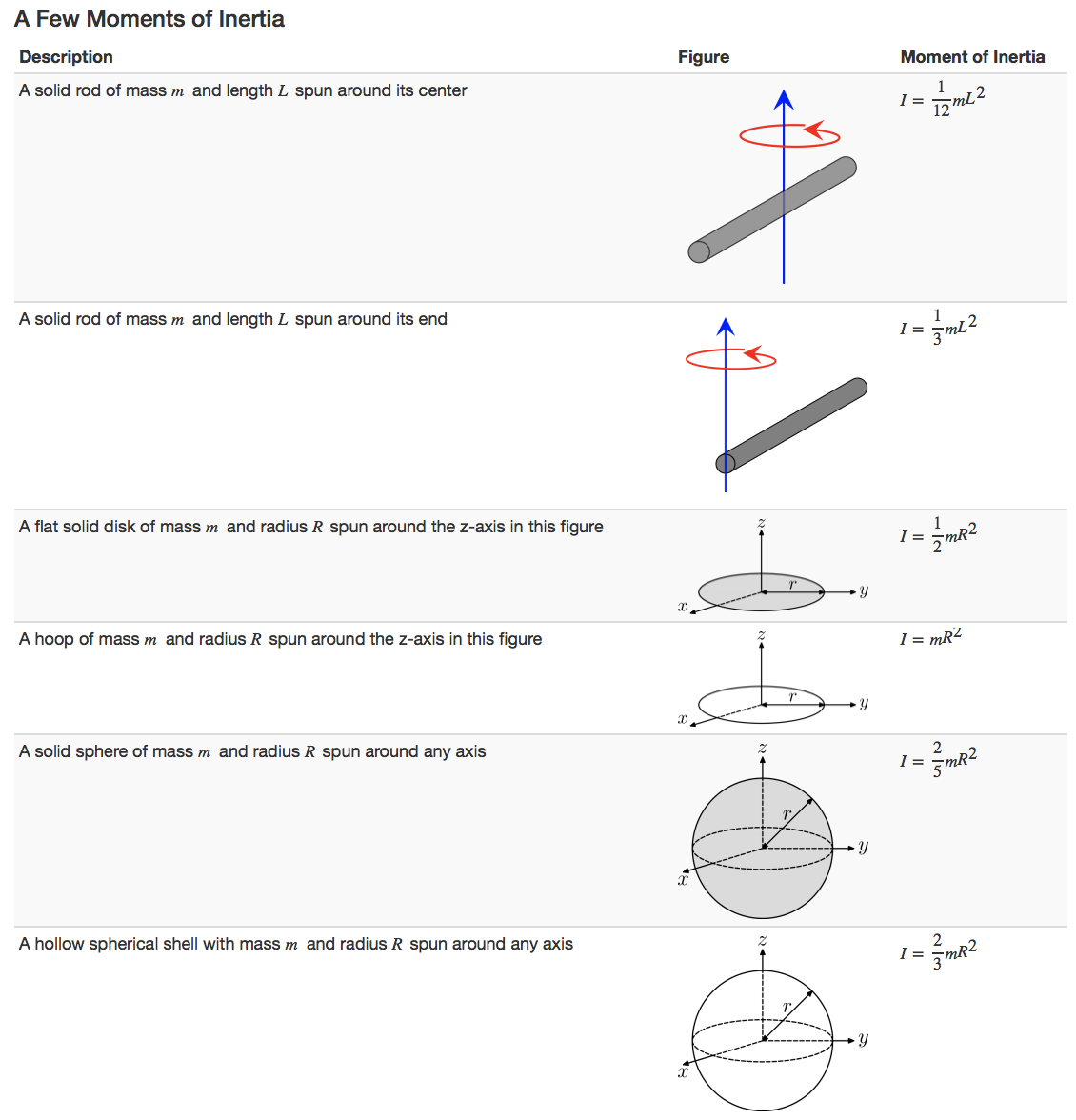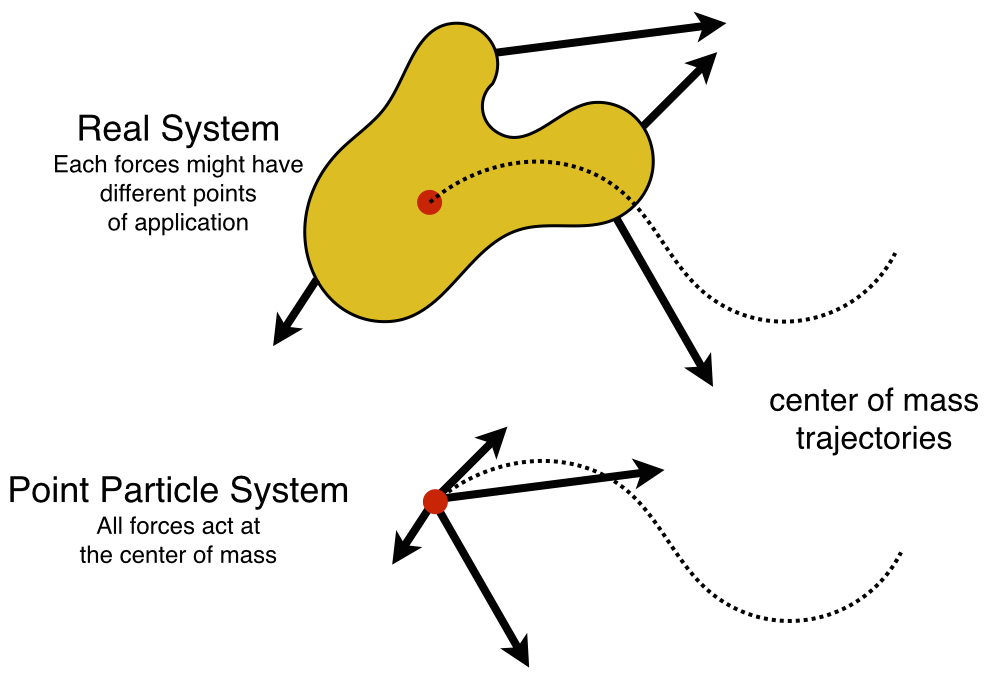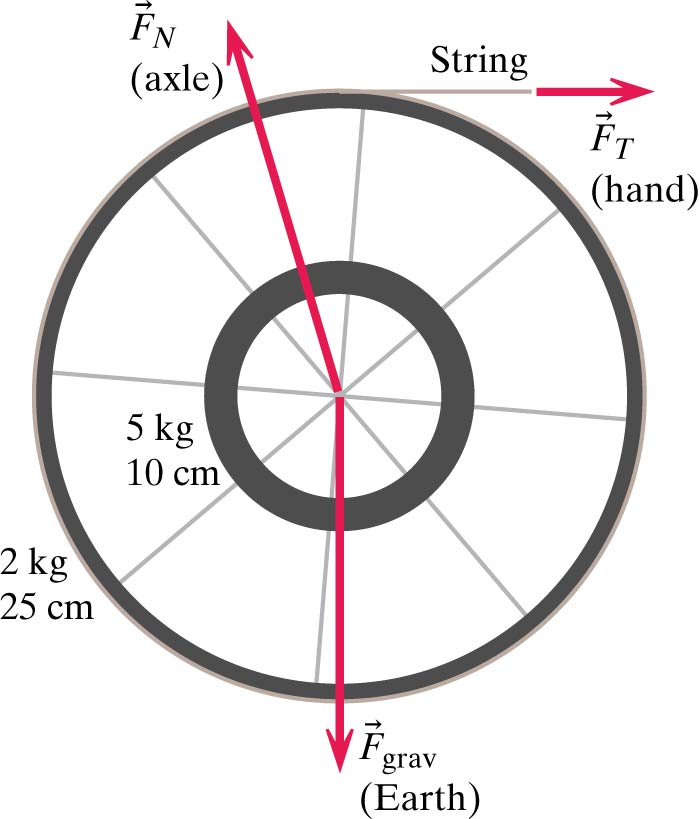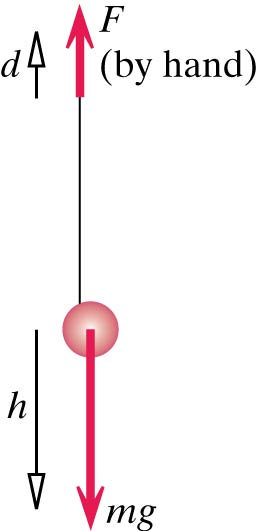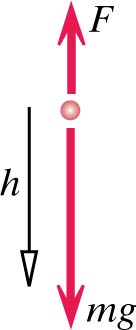Translational, Rotational and Vibrational Energy: Difference between revisions
| Line 87: | Line 87: | ||
==Connectedness== | ==Connectedness== | ||
'''1. How is this topic connected to something that you are interested in?''' | |||
*This topic connected to me because I used to dance when I was younger. This section focused on kinetic energy and the different parts of kinetic energy. You could break up different parts of dance and compare it to kinetic energy. | |||
'''2. How is it connected to your major?''' | |||
*In Chemical Engineering, we will focus on the kinetic energy on the microscopic level and determining the energy of the particles by looking at the translational, rotational, and vibrational energies of the atom, and how they allow chemical reactions to precess. | |||
'''3. Is there an interesting industrial application?''' | |||
*There are many machines that use kinetic energy for power, and we will probably see in a few years from now the use of rotational, translational, and vibrational energy to power anything from phones to computers. | |||
==History== | ==History== | ||
Revision as of 22:14, 7 August 2019
Main Idea
In many cases, analyzing the kinetic energy of an object is in fact more difficult than just applying the formula [math]\displaystyle{ K = \cfrac{1}{2}mv^2 }[/math]. An example of this is when throwing a basketball because not only does it move through the air, but it is also rotating around its own axis. When analyzing more complicated movements like this one, it is necessary to break kinetic energy into different parts, such as rotational, translational, and vibrational, and analyze each one separately to give a more accurate picture.
Translational kinetic energy is the kinetic energy associated with the motion of the center of mass of an object. This would be the basketball traveling in the air from one location to another. While relative kinetic energy is the kinetic energy associated to the rotation or vibration of the atoms of the object around its center or axis. Relative kinetic energy would be the rotation of the basketball around it's axis. Later on this page, we go into more depth about the different types of kinetic energy.
Here is a link to a video which explains kinetic energy in detail: [3]
Mathematical Model
Total Kinetic Energy
As we just saw, the total kinetic energy of a multi particle system can be divided into the energy associated with motion of the center of mass and the motion relative to the center of mass.
- [math]\displaystyle{ K_{total} = K_{translational} + K_{relative} }[/math]
The relative kinetic energy is composed of motion due to rotation about the center of mass and vibrations/oscillations of the object.
- [math]\displaystyle{ K_{total} = K_{translational} + K_{rotational} + K_{vibrational} }[/math]
Translational Kinetic Energy
"Translation" means:
- To move from one location to another location
By calculating translational kinetic energy, we can track how one object moves from one location to another. Since the translational kinetic energy is associated with the movement of the center of mass of the object, it is important to know how to calculate the location of the center of mass and the velocity of the center of mass which is shown in the two equations below:
- [math]\displaystyle{ r_{CM} = \cfrac{m_1r_1 + m_2r_2+m_3r_3 + ...}{m_1 + m_2 +m_3} }[/math]
- [math]\displaystyle{ v_{CM} = \cfrac{m_1v_1 + m_2v_2+m_3v_3 + ...}{m_1+ m_2 +m_3} }[/math]
- Here is a link to a video if you want to refresh your knowledge on center of mass: [4]
The motion of the center of mass is described by the velocity of the center of mass. Using the total mass and the velocity of the center of mass, we define the translational kinetic energy as:
- [math]\displaystyle{ K_{translational} = \cfrac{1}{2}M_{total}v_{CM}^2 }[/math]
Vibrational Kinetic Energy
The total energy due to vibrations is the sum of the potential energy associated with interactions causing the vibrations and the kinetic energy of the vibrations.
- [math]\displaystyle{ E_{vibrational} = K_{vibrational} + U_{s} }[/math]
The easiest way to find vibrational kinetic energy is by knowing the other energy terms and isolating the vibrational kinetic energy. This is when there is no rotational kinetic energy:
- [math]\displaystyle{ E_{total} = K_{trans} + K_{vibrational} + U_{s} +E_{rest} }[/math]
- [math]\displaystyle{ K_{vibrational} = E_{total} - (K_{trans} + U_{s} +E_{rest}) }[/math]
Rotational Kinetic Energy
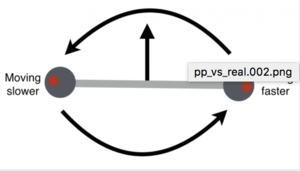
Rotational kinetic energy is the energy due to the rotation about the center of mass. It can be calculated by finding the angular momentum and inertia of the system, which will be discussed in greater detail in the next two sections. The equation used to find kinetic rotational energy is below:
- [math]\displaystyle{ K_{rotational} =\frac{1}{2} I_{cm}{\omega}^2 }[/math]
Moment of Inertia
The moment of inertia of an object shows the difficulty of rotating an object, since the larger moment of inertia the more energy required to rotate the object at the same angular velocity as an object with smaller moment of inertia. It is the sum of the products of the mass of each particle in the object with the square of their distance from the axis of rotation. The general formula for calculating the moment of inertia of an object is:
[math]\displaystyle{ I = m_1r_{\perp,1}^2 + m_2r_2{\perp,2}^2 + m_3r_{\perp,3}^2 +... }[/math] Units: [math]\displaystyle{ kg.m^2 }[/math]
Here [math]\displaystyle{ r_1, r_2, r_3 }[/math] represent the perpendicular distance from the point/axis of rotation.
Moment of Inertia is actually calculated using Calculus. These values we obtain for standard objects are not once you will need to derive, but conceptually understanding how they come to be will help you understand Moment of Inertia and it's impact on a solid. Below are a few moment of inertia used most frequently:
When you compare two bodies rotating with the same kinetic energy and one of them has a higher moment of Inertia, then the one with the higher moment of Inertia has a lower speed. If angular speed is lower and radius is larger that means mass must be small since Moment of Inertia also depends on mass and distance from axis of rotation. So we can deduce such relations which helps us understand how the moment of Inertia of an object actually affects the object in different ways.
Angular Speed
The angular speed is the rate at which the object is rotating. It is given in the following formula:
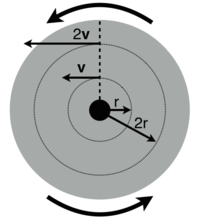
- [math]\displaystyle{ \omega = \cfrac{2\pi}{T} }[/math], where
- [math]\displaystyle{ T = }[/math] the period of the rotation
The angle in which a disk turns is [math]\displaystyle{ 2 \pi }[/math] in a time [math]\displaystyle{ T }[/math]. It is measured in radians per second. The tangential velocity of an object is related to its radius r at the angular speed because the tangential velocity increases when the distance from the center of an object increases. It is shown in the equation below:
- [math]\displaystyle{ v(r)= \omega r }[/math]
Computational Model
Examples
Simple
Middling
Difficult
Connectedness
1. How is this topic connected to something that you are interested in?
- This topic connected to me because I used to dance when I was younger. This section focused on kinetic energy and the different parts of kinetic energy. You could break up different parts of dance and compare it to kinetic energy.
2. How is it connected to your major?
- In Chemical Engineering, we will focus on the kinetic energy on the microscopic level and determining the energy of the particles by looking at the translational, rotational, and vibrational energies of the atom, and how they allow chemical reactions to precess.
3. Is there an interesting industrial application?
- There are many machines that use kinetic energy for power, and we will probably see in a few years from now the use of rotational, translational, and vibrational energy to power anything from phones to computers.
History
See also
Further reading
External links
References
Main Idea
Mathematical Method
Point Particle System VS Extended System
When calculating the total energy of a system, it will sometimes contain one or more types of kinetic energies.
Let's think about a system modeled as a point particle system. In this model of a system, we think of the object as one point, located at its center of mass. It becomes clear that there can only be translational kinetic energy since there cannot be any rotational kinetic energy. This is because there are no atoms rotating about the center of mass, since we are thinking of the center of mass as the entire object. All the forces act on the center of mass.
[math]\displaystyle{ \triangle E_{system} = W }[/math] [math]\displaystyle{ W = F_{net} . \triangle r_{CM} }[/math] [math]\displaystyle{ \triangle E_{system} = \triangle K_{translational} }[/math] [math]\displaystyle{ \triangle K_{translational} = F_{net} . \triangle r_{CM} }[/math]
Viewing a system as a point particle system allows us to easily calculate the translational kinetic energy. This translational kinetic energy will be the same in the extended system as it is in the point particle system. We can use this value to calculate other terms in the general equation in the extended system. In the extended system we add up all the forces that might have different points of application. In the extended system, all the atoms, their rotation about the axis, and the general movement of the center of mass is considered in the extended/real system.There may be spring potential energy and rest energy included for both point particle and real system depending on the example. We start with the general energy equation:
[math]\displaystyle{ \triangle E_{system} = W }[/math] [math]\displaystyle{ W = F_1r_1 + F_2r_2 + F_3r_3 +... +F_nr_n }[/math] [math]\displaystyle{ \triangle K_{translational} + \triangle K_{rotational} + \triangle K_{vibrational} = W }[/math]
Here are some videos that go into more depth about point particle vs real system: [5]
A Computational Model
Vpython
There are not many applications of vpython for this chapter because it necessitates such a conceptual way of thinking. However, it is possible to make a program that calculates the rotational energy given displacements for each force and the magnitude of the force. The mass of the object and the initial conditions would have to be given as well.
Visualizing translational and rotational kinetic energy
It is important to really think about translational kinetic energy as the movement of the center of mass and only that. In the point particle system, only translational kinetic energy is present because we are visualizing the object only as its center of mass, and that is therefore the only kind of movement we have. Let's think about a baton. The baton can be twirled and tossed. If you think of the baton only in terms of its center of mass, you realize that the center of mass only has one kind of movement: being tossed. It is useful to think of the baton as a crushed particle.
In the extended system, however, we consider the movement of the center of mass as well as the movement of all the atoms around it. Since the atoms of the baton that are not its center rotate when it is twirled, there is rotational energy. Its center of mass is still being transferred, there is therefore also translational energy. Here, we don't think the baton as a dot since the object is being both twirled and tossed.
Examples
Simple
Problem statement:
(a) A player lobs a mid-court pass with a 624-g basketball, which covers 15 m in 2 s. What is the basketball’s horizontal translational kinetic energy while in flight? (b) An average molecule of air, in the basketball in part (a), has a mass of 29 u, and an average speed of 500 m/s, relative to the basketball. There are about [math]\displaystyle{ 3×10^{23} }[/math] molecules inside it, moving in random directions, when the ball is properly inflated. What is the average translational kinetic energy of the random motion of all the molecules inside, relative to the basketball? (c) How fast would the basketball have to travel relative to the court, as in part (a), so as to have a kinetic energy equal to the amount in part (b)?
"Strategy":
In part (a), first find the horizontal speed of the basketball and then use the definition of kinetic energy in terms of mass and speed, [math]\displaystyle{ K=1/2mv^2 }[/math]. Then in part (b), convert unified units to kilograms and then use [math]\displaystyle{ K=1/2mv^2 }[/math] to get the average translational kinetic energy of one molecule, relative to the basketball. Then multiply by the number of molecules to get the total result. Finally, in part (c), we can substitute the amount of kinetic energy in part (b), and the mass of the basketball in part (a), into the definition [math]\displaystyle{ K=1/2mv^2 }[/math], and solve for v.
Solution:
a.The horizontal speed is (15 m)/(2 s), so the horizontal kinetic energy of the basketball is
[math]\displaystyle{ 1/2(0.624kg)(7.5m/s^2)=17.6J }[/math]
b.The average translational kinetic energy of a molecule is
[math]\displaystyle{ 1/2(29u)(1.66×10^{−27}kg/u)(500m/s)^2=6.02×10^{−21}J }[/math]
and the total kinetic energy of all the molecules is
[math]\displaystyle{ (3×10^{23})(6.02×10^{−21}J)=1.80kJ }[/math]
c.v=76.0m/s.
Middling
Problem statement: In the figure which is in the representations section you observe that a wheel is mounted on a stationary axel, which is nearly frictionless so that the wheel turns freely. The wheel has an inner ring with mass 5 kg and radius 10 cm and an outer ring with mass 2 kg and radius 25 cm; the spokes have negligible mass. A string with negligible mass is wrapped around the outer ring and you pull on it, increasing the rotational speed of the wheel. During the time that the wheel's rotation changes from 4 revolutions per second to 7 revolutions per second, how much work do you do?
"Facts":
Inner ring of wheel has mass of 5 kg and radius 10 cm Outer ring has a mass of 2 kg and radius of 25 cm String with negligible mass is wrapped around the outer rung and pulled out
"Assumption and Approximations":
The rod has to be sufficiently thin so your not worried about contributions to the moment of inertia from parts of the rod that are further away from the center of mass. Stationary axle is nearly frictionless so that the wheel turns freely. The spokes of the wheel have negligible mass. String wrapped around the outer ring has negligible mass.
"Representations"
System: Wheel and string Surroundings: Your hand, axle, Earth
Solution:
From the Energy Principle: [math]\displaystyle{ E_f=E_i+W }[/math]
Substitute in equation for rotational energy for energy initial and energy final.
[math]\displaystyle{ 1/2Iω_f^2=1/2Iω_i^2+W }[/math]
[math]\displaystyle{ W=1/2I(ω_f^2−ω_i^2) }[/math]
What is the moment of inertia? Group this sum into a part that includes just the atoms of the inner ring and another part that includes just the atoms of the outer ring:
[math]\displaystyle{ I=(mr{⊥1}^2 + m_2r_{⊥2}^2+ ⋅⋅⋅)inner+ (m_1r_{⊥1}^2+ m_2r_{⊥2}^2)outer + ⋅⋅⋅ }[/math]
The total inertia is then the inertia inner + the inertia outer (I=Iinner+Iouter) This is a general result: The moment of inertia of a composite object is the sum of the moments of inertia of the individual pieces, because we have to add up all the contributions of all the atoms. We already determined that the moment of inertia of a ring is [math]\displaystyle{ MR^2 }[/math] (all the atoms are at the same perpendicular distance R from the center), so the moment of inertia of this wheel is:
[math]\displaystyle{ I=M_{inner}R_{inner}^2+M_{outer}R_{outer}^2 }[/math]
Substitute the corresponding values for the variables:
[math]\displaystyle{ I=(5kg)(.1m)^2+ (2kg)(.25m)^2= (0.050+0.125)kg⋅m^2=0.175kg⋅m^2 }[/math]
We need to convert revolutions per second into radians per second:
[math]\displaystyle{ ω_i=(4revs)(2πradians/rev)=25.1 radians/s }[/math]
[math]\displaystyle{ ω_f=(7revs)(2πradians/rev)=44.0 radians/s }[/math]
You, the Earth, and the axle will exert forces on the system. How much work does the Earth do? Zero, because the center of mass of the wheel doesn't move. How much work does the axle do? If there is negligible friction between the axle and the wheel, the axle does no work, because there is no-displacement of the axle's force. Therefore only you do work, and the work that you do is:
[math]\displaystyle{ W=1/2(0.175kg⋅m^2)(44.02+25.12)radians^2s^2=114J }[/math]
Difficult
Problem statement You're playing with a yo-yo of mass m on a low-mass string. You pull up on the string with a force of magnitude F, and your hand moves up a distance d. During this time the mass falls a distance h (and some of the string reels off the yo-yo's axle). (a) What is the change in translational kinetic energy of the yo-yo? (b) What is the change in the rotational kinetic energy of the yo-yo, which spins faster?
"Assumptions and Approximations" able to maintain constant force when pulling up on yo-yo no slippage of string around axis sprinkle turns the same amount as string that has unraveled no wobble included string has no mass
a.
Facts and Representations
Initial State: point particle with initial translational kinetic energy
Final State: Point Particle with final translational Kinetic energy
Point Particle System
System: Point Particle of mass m
Surroundings: Hand and earth
"Solution"
From the Energy Principle ( when dealing with a point particle it only has Ktrans):
ΔKtrans= ∫F⃗ net⋅dr⃗ cm
Substituting in for the forces acting on the yo-yo for Fnet and the change in position in the y direction for the centre of mass for dr⃗ cm we get:
ΔKtrans=(F−mg)ΔyCM
As indicated in diagram in the b section of the representation:
ΔyCM=−h (Substitute in −h for yCM)
ΔKtrans=(F−mg)(−h)
Multiply across by a minus and you get an equation for ΔKtrans that looks like:
ΔKtrans=(mg−F)h
b. "Facts and Representation" Initial State: Initial rotational and translational kinetic energy Final State: Final rotational and translational kinetic energy Real system System: Mass and String Surroundings: Earth and hand
"Solution" From the energy principle we know:
ΔEsys = Wsurr
In this case we know that the change in energy in the system is due to the work done by the hand and the work done by the Earth.
ΔEsys=Whand+WEarth
Because we are dealing with the real system in this scenario the change in energy is equal to the change in translational kinetic energy + the change in rotational kinetic energy.
ΔKtrans+ΔKrot=Whand+WEarth
Substitute in the work represented by force by distance for both the hand and the Earth.
ΔKtrans+ΔKrot=Fd+(−mg)(−h)
From part (a) of the problem we can substitute in (mg−F)h for ΔKtrans as the translational kinetic energy will be the same.
ΔKtrans=(mg−F)h
Substituting this into our equation leaves us with:
(mg−F)h+ΔKrot=Fd+mgh
Solve for change in rotational kinetic energy:
ΔKrot=F(d+h)
History
Kinetic energy was first set apart from potential energy by Aristotle. However, it wasn't until 1929 that Gaspard-Gustave Coriolis showed the first signs of understanding of kinetic energy the way that we do today by focusing on the transfer on energy in rotating water wheels.
See also
For more specific information on point particle systems and extended systems: http://www.physicsbook.gatech.edu/Point_Particle_Systems ; http://www.physicsbook.gatech.edu/Real_Systems
For more specific information on the conservation of energy: http://www.physicsbook.gatech.edu/Conservation_of_Energy
For more information on potential energy and when it is present: http://www.physicsbook.gatech.edu/Potential_Energy
For information on how to take this concept further to calculate thermal energy in some instances: http://www.physicsbook.gatech.edu/Thermal_Energy
External links
https://www.youtube.com/watch?v=5qwW8WI1gkw&feature=youtu.be
https://www.youtube.com/watch?v=craljBk-E5g&feature=youtu.be
References
All images used on this page do not belong to me. All problem examples, youtube videos, and images are from the websites referenced below.
http://p3server.pa.msu.edu/coursewiki/doku.php?id=183_notes:energy_sep
https://cnx.org/contents/1Q9uMg_a@6.4:V7Fr-AEP@3/103-Relating-Angular-and-Trans
